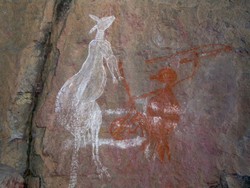Stronger social identity and cohesion through rock art
Rock art research is increasingly acknowledged as an important field. However, there are still strong regional and national traditions and boundaries that can and often do cause complications for interdisciplinary and international research projects. An EU-funded project, ROCKART (Indigenous heritage, rock art, and cultural identity in post-colonial nations), showed how rock art is used, and how it influences identity formation processes, in three post-colonial nations: Australia, South Africa and the United States. The work entailed collaboration with conservation scientists and social scientists (archaeologists, anthropologists, historians, art historians, heritage managers). It also involved the combination of contemporary indigenous and tourist perspectives. ROCKART focused on the use of indigenous rock art motifs in unoriginal contexts in the three post-colonial countries – in national coats of arms, on coins, in Olympic sports team logos, in modern artworks, and in other socio-political and commercial contexts (e.g. T-shirts, coffee mugs, indigenous/tribal casino logos). The researchers used theory from the fields of archaeology, anthropology, art history, indigenous studies, intellectual property analysis and visual heritage studies. They looked at what rock art means to contemporary peoples (both indigenous and non-indigenous), how people use it today, and how these meanings and uses vary from one post-colonial nation to the next. It was found that appropriate management of fragile rock art heritage sites in national and state parks makes a difference because it challenges people’s preconceptions of rock art and of the indigenous people who made it. The analysis of ethnographic and archaeological data has yielded meaningful results and practical suggestions regarding identity formation and the presentation of indigenous rock art. These results are applicable to public rock art sites worldwide, including those in Europe. Furthermore, new interactions and collaborations within and outside Europe have been established, and ROCKART has helped to realise the potential in creating revenue and jobs in rural, impoverished areas.







